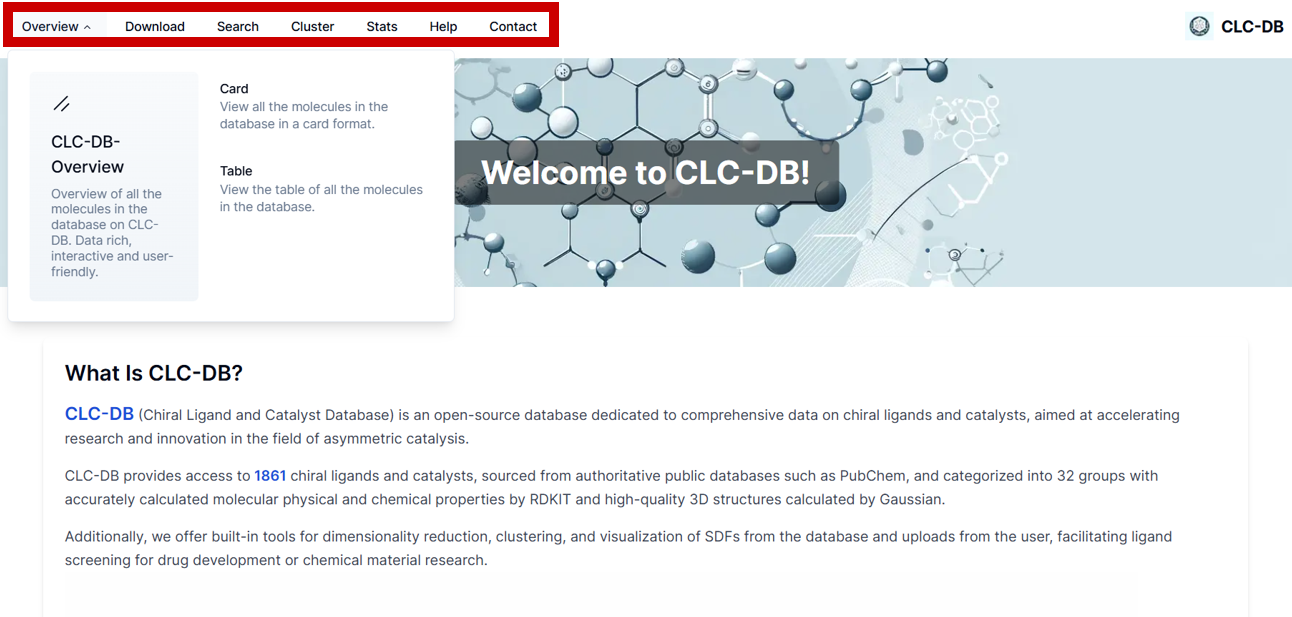Help
This is help page, read throught it to get a grasp of what you can do on this website.Home Page
Use the navigation bar to get quick access to the database.

Overview
Retrieve the information in the format of cards or tables. Suitable for casual browsing. You can click to download or review details of the certain molecule you are interested in.


Download
Suitable for batch downloading. It's similar to the overview page but you can choose to download multiple molecules of one category, in a page or all of them.

What you will get here is a folder of SDFs and a combined Excel of basic information. Notice that if downloaded separately, XLSX files will be individual and require manual merging of rows. This is the only method to obtain a combined one.


Search
You can search for CAS ID, Name, or SMILE. Notice that you can perform a partial keyword search, and the system will automatically match all relevant results:

You can draw a structure and it will be converted into SMILES for searching. Note that partial search also applies.

Also, we support multi-search by uploading a CSV of IDs:


Cluster
Clustering is the core function of this database. Thanks to the high-quality 3D coordinate information computed, you can download SDF files and perform dimensionality reduction and clustering to guide your experiments.
Let's assume you are conducting a ligand screening experiment, and you have completed a portion of it, obtaining the yield for each ligand. Now, as you proceed with your experiment and explore more ligands, our database is here to assist you:
Firstly, you need to download all relevant SDF files from the database, including those you have completed and those you are yet to explore, and then upload them to our online clustering tool.

Secondly, you need to select descriptors for clustering, as well as the dimensionality reduction method, clustering algorithm, and their corresponding parameters. We provide a visual adjustment bar for your convenience, so please experiment multiple times until you achieve satisfactory results.


Lastly, based on the clustering outcomes, select the ligands you will explore next. In general, you should prioritize ligands that are close to those with high yields and different from those with low yields. This prioritization is likely to assist you in identifying the optimal ligands quickly.

What's more, we provide a quick sample for your reference. Click here to generate an example consisting of 100 samples with auto-selected parameters. These samples are processed using E3FP or RDKIT fingerprints, dimensionality reduction with PCA, and K-Means clustering.

Click here to access the 100 samples used in the example.

Click here to refer to the basic parameters used in the example.

Stats
Obtain various graphics, such as molecular weight distribution and ligand type distribution.
Help
Click here and you will jump to this page for help.
Contact
If you have any questions, don't hesitate to contact us.